ECOLOGY ▪ EDUCATION ▪ ADVOCACY
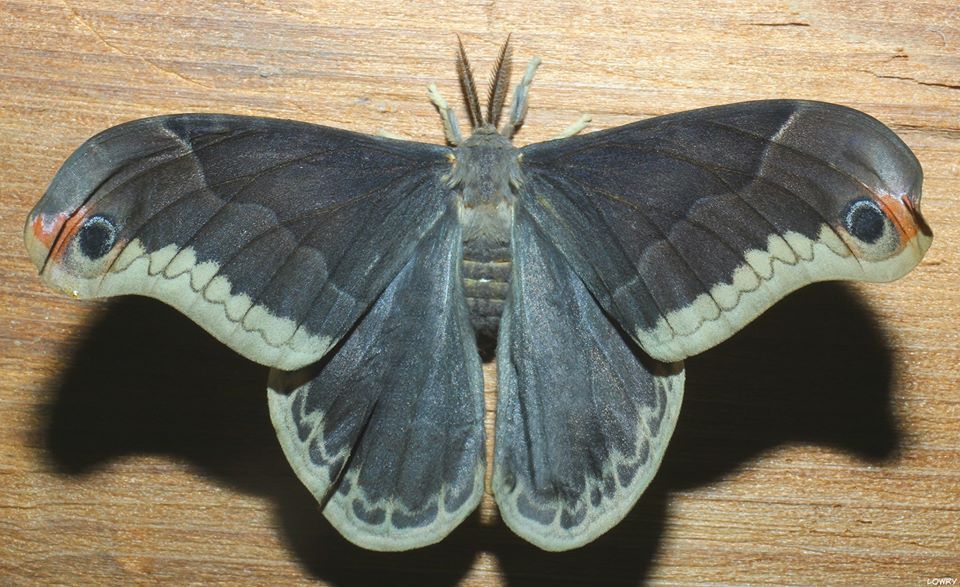
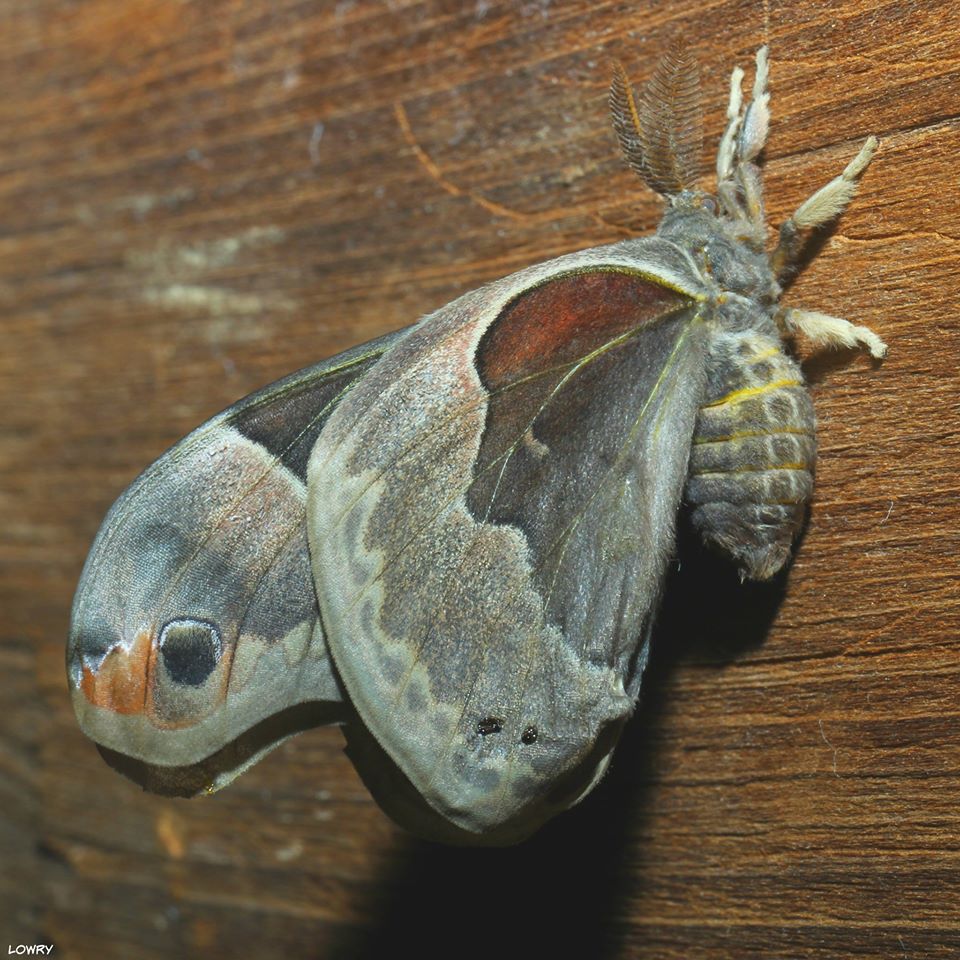
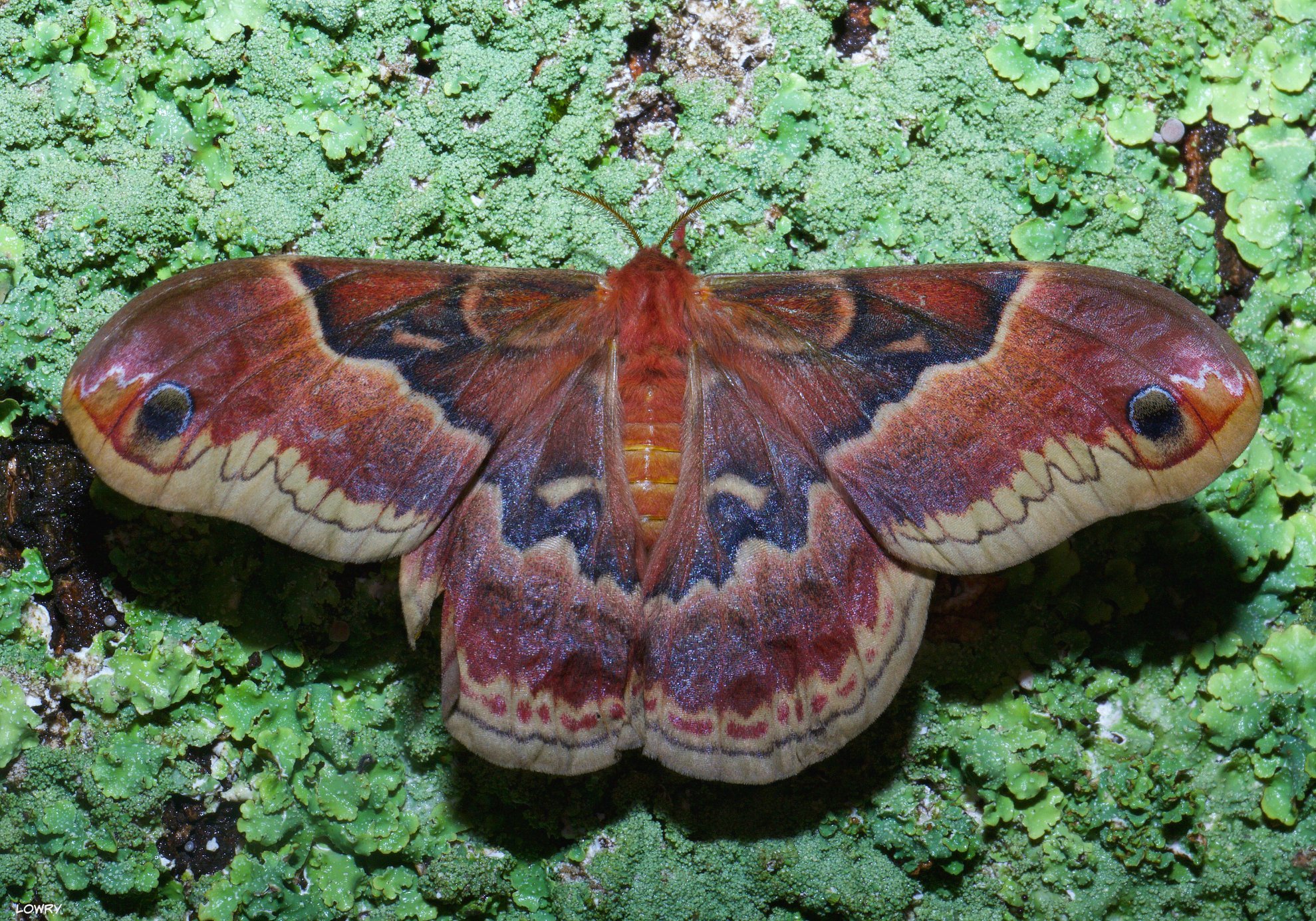
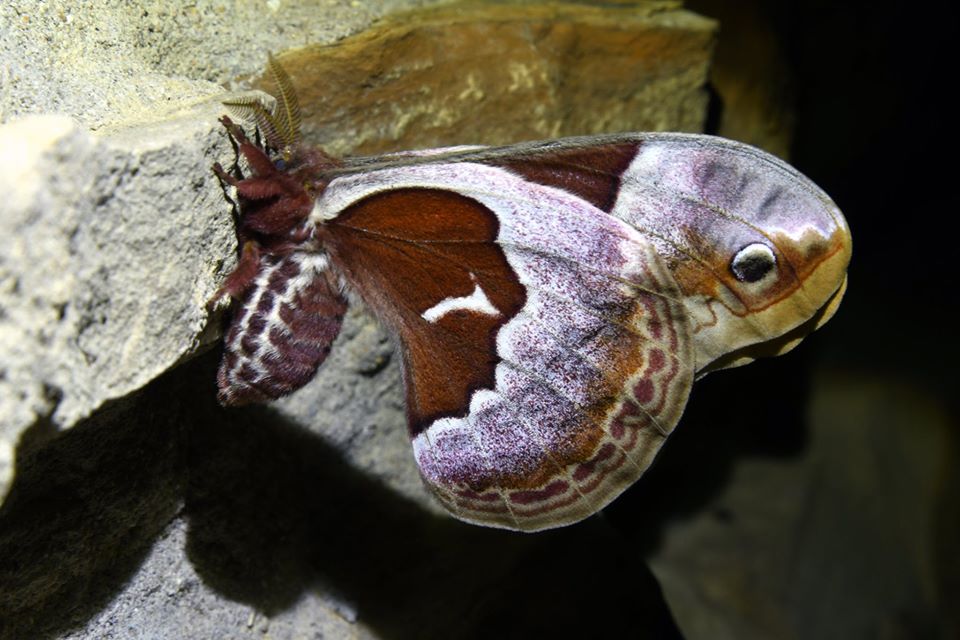
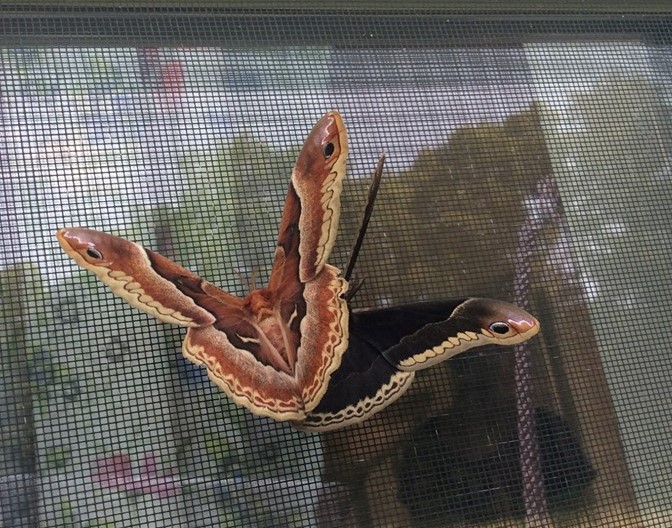
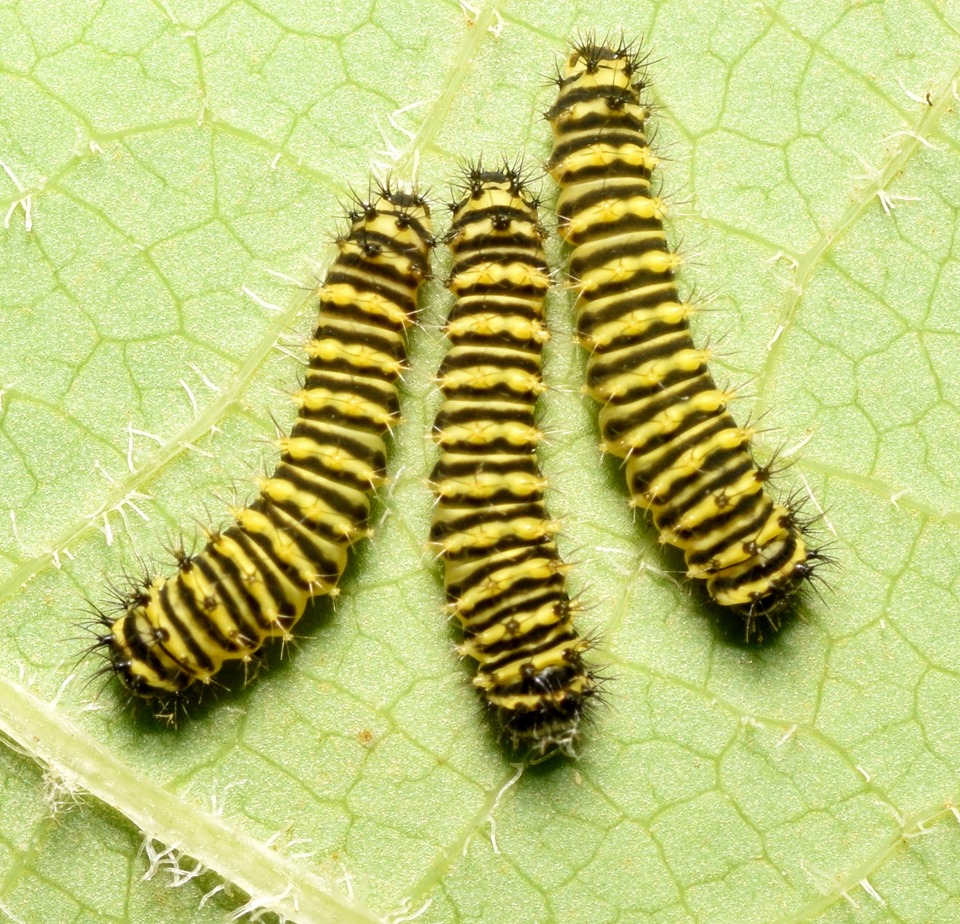
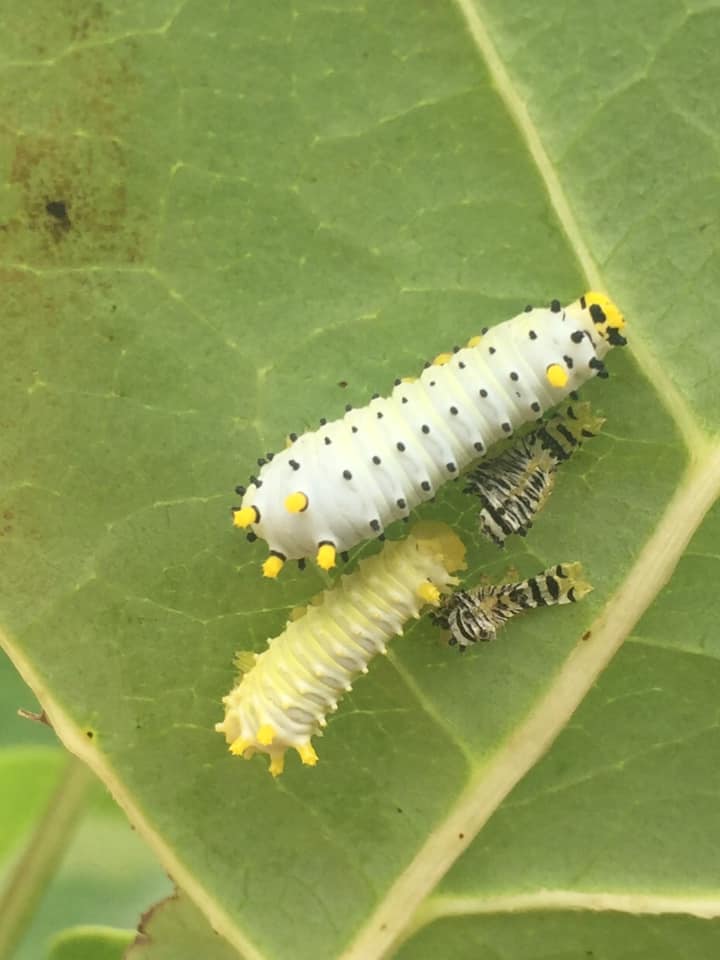
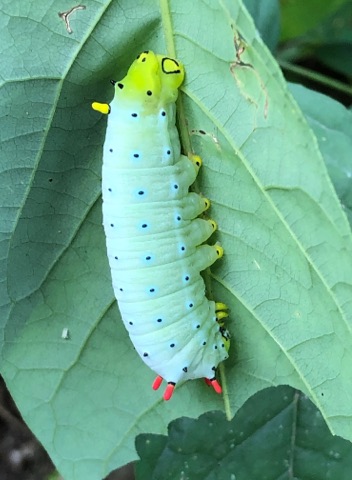
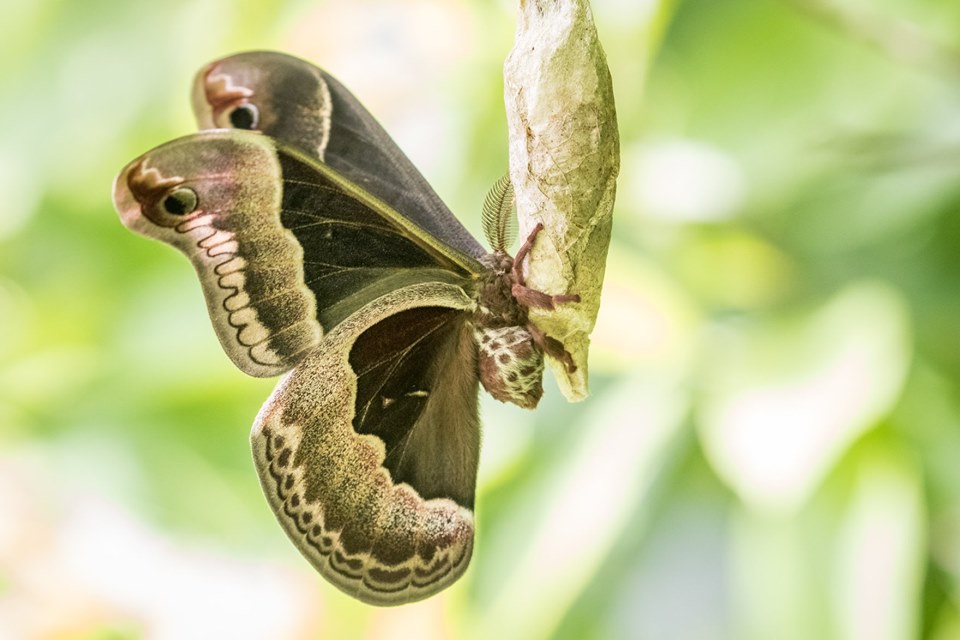
Callosamia: Callo in Latin means “beautiful,” and in Greek mythology, Samia was a freshwater nymph and the daughter of the river god Maeander.
Promethea: Named for the Greek Titan, Prometheus, who stole fire from Zeus, shared with it humankind and was persecuted for his transgression. In classical art, Prometheus often appears in scenes with deep red coloring similar to that of the female moth.
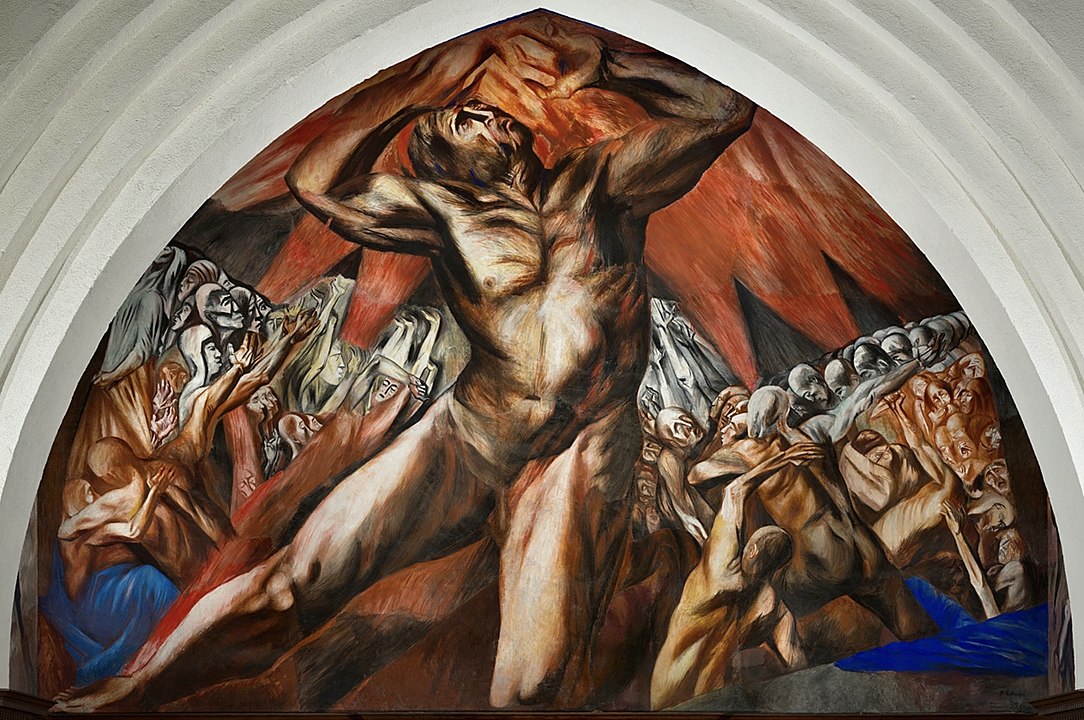
kal-oh-sam-eye-uh proh-mee-thee-uh
Spicebush Silkmoth — referring to Lindera benzoin, one of its favored host plants.










This map illustrates documented North American records of Callosamia promethea as of 31 December 2020.
 Documented record(s)
Documented record(s) 5: Secure
5: Secure  NR: Not ranked
NR: Not ranked
Promethea moths were first described by British entomologist Dru Drury, who introduced the species to the world in his three-volume publication Illustrations of Natural History, Wherein are Exhibited Upwards of 240 Figures of Exotic Insects, published between 1770 and 1787. The photo below is a plate from Drury’s work that depicts a male Promethea Silkmoth (top) and a female (bottom)
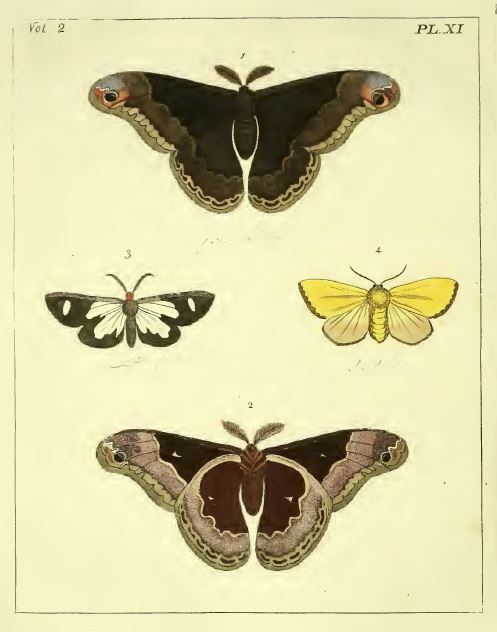
Callosamia promethea caterpillars are polyphagous and feed on a wide variety of native trees and shrubs. Adults lack a digestive system, do not eat, and exist solely for reproduction.
| Known Larval Food Sources in Indiana | ||
| Family | Taxonomic Name | Common Name |
|---|---|---|
| Order: Dipsicales | ||
| Adoxaceae | Viburnum spp. | viburnums |
| Order: Ericales | ||
| Ebenaceae | Diospyros virginiana | persimmon |
| Ericaceae | Kalmia latifiolia | mountain laurel |
| Stryacaeae | Stryax spp. | snowbells |
| Styracaceae | Halesia carolina | Carolina silverbells |
| Order: Fagales | ||
| Betulaceae | Betula spp. | birches |
| Fagaceae | Fagus grandifolia | American beech |
| Quercus spp. | oaks | |
| Order: Gentianales | ||
| Rubiaceae | Cephalanthus occidentalis | buttonbush |
| Order: Lamiales | ||
| Oleaceae | Fraxinus spp. | ashes |
| Syringa spp. | lilacs | |
| Order: Laurales | ||
| Lauraceae | Lindera benzoin | spicebush |
| Sassafras albidum | sassafras | |
| Order: Magnoliales | ||
| Magnoliaceae | Liriodendron tulipifera | tulip tree |
| Magnolia spp. | magnolias | |
| Order: Malvales | ||
| Tiliaceae | Tilia americana | American basswood |
| Order: Myrtales | ||
| Lythraceae | Lythrum spp. | loosestrifes |
| Order: Pinales | ||
| Pinaceae | Pinus | pines |
| Order: Ranunculales | ||
| Berberidaceae | Berberis spp. | barberries |
| Order: Rosales | ||
| Rosaceae | Malus spp. | apples and crabapples |
| Prunus spp. | cherries | |
| Pyrus spp. | pears | |
| Order: Salicales | ||
| Salicaceae | Populus spp. | poplars |
| Salix spp. | willows | |
| Order: Sapindales | ||
| Aceraceae | Acer spp. | maples |
| Order: Saxifragales | ||
| Altingiaceae | Liquidambar styraciflua | American sweetgum |
The map, graph(s), and data below represent the Indiana sightings of Callosamia promethea as of 24 April 2025, confirmed through photographic evidence by individuals who contributed to the Great American IN Nature Lepidoptera Project (GAIN LP).
Counties recorded:
33 of 92
Top counties/#of records:
Porter: 11
Scott: 9
Brown: 8
Owen: 8
Monroe: 8
Greene: 6
Jefferson: 6
 GAIN LP documented in county
GAIN LP documented in county
The images and records below were all submitted by individuals through the Great American Indiana Nature Lepidoptera Project (GAIN LP).
Evans, D. 1978. Defensive Behavior in Callosamia promethea and Hyalophora cecropia (Lepidoptera: Saturniidae). The American Midland Naturalist, 100(2), pp.475-479.
Promethea mural by Jose Clemente Orozco is public domain via Wikimedia Commons.